Qilihai Wetland, located in the southwest of Ninghe district, Tianjin, is part of the core region of the Tianjin Ancient Coast and Wetland National Nature Reserve approved by the State Council in 1992. Boasting the largest natural wetland in the Tianjin-Beijing-Tangshan triangle area, Qilihai Wetland is called the Green Lung of Beijing and Tianjin. The Qilihai ancient coast is one of the three international nature reserves of symbiosis between ancient coast and wetland, with the other two being the shell dike in the American state of Louisiana and the reserve in Suriname in South America.
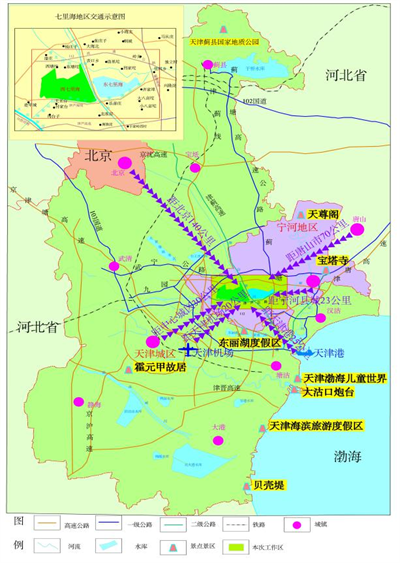
Qilihai Area Traffic Map
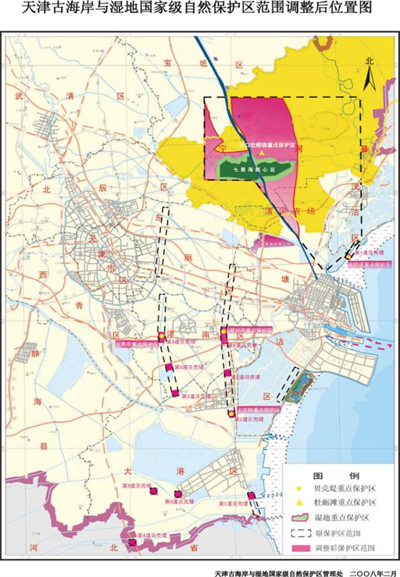
A Map of the Tianjin Ancient Coast and Wetland National Nature Reserve
The Tianjin Ancient Coast and Wetland National Nature Reserve, covering a total area of 359.13 square kilometers, is on the west bank of Bohai Bay at the estuary of the Haihe River. It is located in parts of the Ninghe district, Binhai New Area, Jinnan district, and Baodi district of Tianjin, Qinghe Farm of Beijing, and the Lutai Farm of Hebei province.
The nature reserve has an area of 233.49 square kilometers in Ninghe district, Tianjin, which consists of a core area and a surrounding buffer zone and experimental area. The core area is 44.85 square kilometers, the buffer zone 42.27 square kilometers, and the experimental area 146.37 square kilometers. The core area of the ancient oyster reef is 0.17 square kilometers, and its buffer area is 0.07 square kilometers.
Flowing from north to south, the Chaobai River divides the Qilihai area into eastern and western parts. Eastern Qilihai covers an area of 16.26 square kilometers, half reeds and half water surface; western Qilihai is 28.59 square kilometers, the majority of which is wild weeds.
The nature reserve is home to 38 villages in the six towns of Biaokou, Qilihai, Huaidian, Panzhuang, Zaojia and Dongjituo, with a total population of 110,000.
1. Formation and evolution of the Qilihai Wetland
The Qilihai Wetland is one of the many ancient lagoons in the Tianjin Plain formed during sea regression.
According to geologists, in the late Quaternary period 10,000 years ago, global climate warming led to a gradual rise of sea level. And 8,000 years ago, Tianjin experienced a large-scale transgression, geologically known as the "Tianjin Transgression", when the seawater reached the Huangzhuang and Donglaokou areas of Baodi district, about 20 kilometers north of the Qilihai area, and even reached Baiyangdian Lake in the west at the transgression’s peak. For the last 5,000 years the Bohai Sea has gradually retreated, forming a beautiful shallow beach. About 2,000-3,000 years ago, the area became a shallow lake and swamp; and 800 years ago, due to the Yellow River, the channel between the ancient lagoon and the ancient Bohai Sea was cut off, so that the Qilihai evolved into a freshwater lake and gradually separated from the Bohai Sea.
In ancient times, Qilihai was a famous large lake in China. During the Ming and Qing dynasties, according to the Records of Emperor Shizong of the Ming Dynasty (1507-1566), the Qilihai area was "two hundred and fifty-two miles vast." According to the "Ri Xia Jiu Wen Kao", a huge series of documents about Beijing history which was ordered in the 39th year of Emperor Qianlong of the Qing Dynasty (1774), "The Qilihai area is 252 miles", which was 3-4 times the current size. The Qilihai area is in three parts: Qianhai, Houhai and Qulihai.
The earliest description of the Qilihai is in the "Shui Jing Zhu"(Commentary on the Water Classic), a famous ancient Chinese geography book written by Li Daoyuan (466 or 472-527), a renowned geographer and essayist of the Northern Wei Dynasty. The "Yong Nu Sou" referred to by Li in the book were the swamps and shallow lakes scattered on the southeast coast. Although there was no such name as "Qilihai" at that time, the reference was actually to the "Qilihai". In this regard, the "Jifu Tongzhi" of the Qing Dynasty made it very clear: "Qilihai is the "Yong Nu Sou" mentioned in "Shui Jing Zhu".
At that time, Qilihai was under the jurisdiction of Yongnu county, and the "Sou" mentioned in the Shui Jing Zhu was a swamp where grasses grew in shallow water.

Historical map of the Qilihai Area
2. Natural features of the Qilihai Wetland
A natural wetland with a complete ecosystem in the Beijing-Tianjin-Tangshan triangle area
The Qilihai Wetland is a typical ancient lagoon wetland with a complete ecosystem, having a water area of 2,333.33 hectares and a reed area of 4,000 hectares. With the Chaobai River and Jintang Canal flowing through the whole area, it is connected with the Ji Canal, the Yongding New River and the Beijing Drainage River. Vertical and horizontal rivers, interweaved branches, and shallow lakes and swamps give the Qilihai Wetland its unique, quiet, simple, and original beauty.
The Qilihai Wetland boasts a huge ecological function. As the extensivenatural wetlands produce a large amount of oxygen and the content of negative oxygen ions per cubic centimeter is 3,500, which is 30-60 times higher than that in the central area of big cities, the Qilihai Wetland area is known as the "Largest Natural Oxygen Bar" in the Beijing-Tianjin-Tangshan region and the "Green Lung" of Beijing and Tianjin. In addition, the area also plays an important role in beautifying the environment, regulating climate, conserving water sources, purifying water, preventing and controlling floods, and maintaining a natural balance. The splendid natural scenery of Qilihai is harmoniously blended with the flourishing scene of the urban area, creating a peaceful and beautiful environment in the surrounding area of Tianjin and playing an active role in improvement of the city's environmental habitat.

Scenery of the Qilihai Wetland
An ecosystem rich in biodiversity
An important station for birds as they travel to and from Australasia to East Asia, Qilihai currently has 258 species of birds in 16 orders and 45 families; an increase of 31 species from 227 species in 2016. The number of birds has increased to 400,000 to 500,000 from 200,000 to 300,000.

Chinese penduline tit
The Qilihai Wetland has 35 species of birds that are endangered or of important conservation significance. Six of them are under class I protection, including the oriental white stork, great bustard, relict gull, white crane, black stork, and haliaeetus leucoryphus; and 29 others are under Class II protection, including whooper swans, cygnets, mute swans, white-naped cranes, mandarin ducks, grey cranes, demoiselle cranes, Chinese egrets, owls, falcons, and eagles.
The common birds living in the Qilihai Wetland include wild ducks, herons, podicedidae, terns, whiskered terns, seagulls, egrets, ring-necked pheasants, hill pigeons, turtle doves, quails, great reed warblers, night herons, and pond herons.

An Aurora Bird
The Qilihai Wetland area has a number of other wild animals: more than 30 kinds of fish such as grass carp, carp, crucian carp, black carp, catfish, eel, snakehead, and loach; six species of reptiles, including geckos, lizards, and snakes; four kinds of amphibians including frogs and toads; eight kinds of crustaceans, including river crabs, soft-shelled turtles, black tiger shrimp and freshwater shrimp; 13 species of mammals in five orders and six families, such as foxes, raccoon dogs, badgers and rabbits; and 164 species of insects, including butterflies, moths, locusts, crickets, cicadas, and mantises in 10 orders, 56 families, and 155 genera.
In addition, there are 153 species of wild plants in 41 families in the Qilihai area, accounting for 93 percent of the wetland plants in the Tianjin coastal area. Among them, the edible ones include kochia, suaeda salina, purslane, sonchus oleraceus, and barnyard grass. The plants that can be used as medicine include mandala, cnidium monnieri, plantain, physalis, and motherwort. Among the rare and endangered species are wild soybean, which is included in the Red Book of "Rare and Endangered Plants in China", and wild mung bean, an important genetic plant for cultivating excellent varieties. The limonium sinensis, physalis, incarvillea sinensis, and cardiospermum halicacabum are also very rare in North China.

Nymphoides Peltata
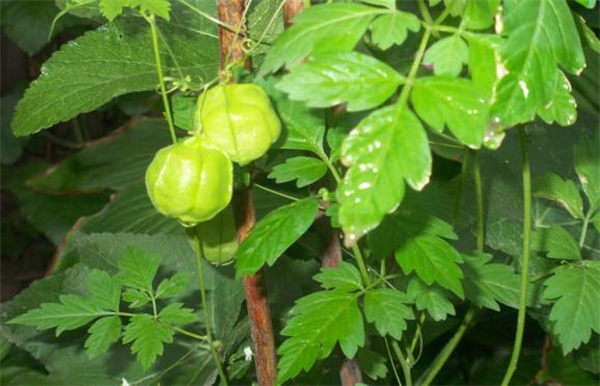
Cardiospermum halicacabum
A living history of land and sea changes
Qilihai is one of the world's three most famous ancient coasts. It features unique natural landscapes with ancient oysters, shell dikes and coastal wetlands. The ancient oysters buried to the south of Biaokou village in eastern Qilihai constitute the largest ancient oyster reef ever discovered in the world. The reef survived until about 7060-4100 years ago, buried 3-7 meters below the earth’s surface. The thickness of the reef is 3-5 meters in general, and its maximum thickness is seven meters. The individual oysters are 30-40 cm tall, 15-20 cm long and 10-15 cm wide. Their high density and clear ordering are extremely rare in coastal plains on the edge of the western Pacific Rim.
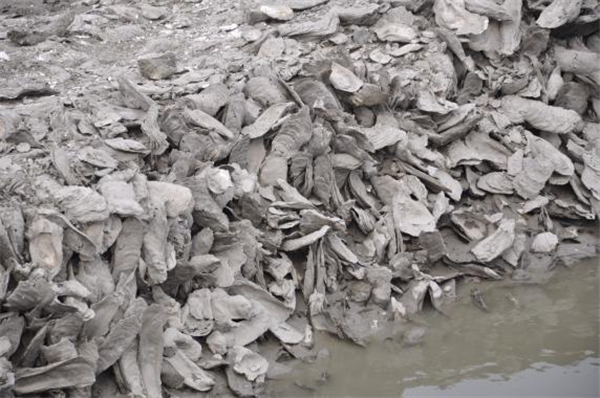
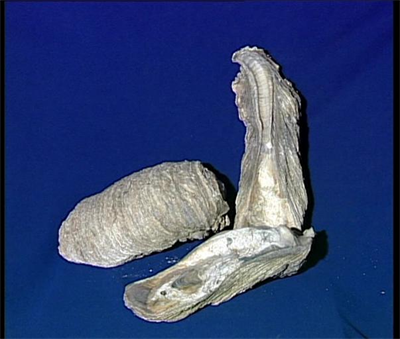
The oyster beach is a precious natural relic of the Yellow River Delta's slow process of forming land from sea and it is a non-renewable resource. It is of great significance and scientific value in tracing the sea and land changes in Tianjin and the southeastern coast of China, and in studying the Quaternary geology and ecological environment of the ancient coastal zone, including its paleogeography, paleoclimate, marine ecology, sea level changes and neotectonic movements.
An area with ancient relics
Besides beautiful natural scenery, the Qilihai Wetland area boasts profound culture. Some of its landscapes, historic sites, and folk customs have romantic stories.
The area is famous for a large number of Warring States relics, sites of the Qin and Han dynasties (221 BC-AD 220), ancient tombs, and residences of historical celebrities. Among them, the Hongxin Dike, Pan Mei Tomb, Qilang Tomb, and Bagua Valley are amazing in a miraculous style.




